Long time readers know that I have a love-hate relationship with high end restaurants, especially those that bring a bit of a “modernist” approach to their dishes. I’ve had exceptional meals, I’ve had horrendous meals, at places that regularly win awards and are touted by many as pinnacles of what can be achieved in the kitchen (until someone else comes along and shows that there’s a different pinnacle that’s better, or different, or… whatever). One of the things that attracted me to finally get around to DOM, Rua Barão de Capanema 549, is that chef Alex Atala doesn’t go for the whole modernist thing particularly. Sure, there are touches here and there, but it’s mostly about exploring, in-depth, individual ingredients “re-discovered” (or, as Henry put it, appropriated) from indigenous cultures in Brazil’s history and among its “first peoples”.
So what’s the experience at DOM, one of Latin America’s 50 Best Restaurants, and one of the few Michelin starred restaurants in Brazil (2 stars), and touted left and right as one of the finest dining experiences in the country? On arrival, a lovely greeting, and immediately to the table. Before anything, water is offered. Once that’s on the table, a cocktail and wine list is brought. I’m a little disappointed in the latter. It’s extensive, no doubt (and expensive, but that was to be expected), but for a place that’s all about Brazil and what the country has to offer, it’s notably light on domestic offerings. Brazil may not be one of the world’s top wine producers, but there are plenty of wineries around – 150 who produce “fine wine” at levels sufficient for commercial distribution, and another 1100 smaller producers, many of whom could certainly supply a single, top end restaurant with a mission of this sort. Yet a list of well over a hundred wines only offers two sparkling, one white, and two red wines from the country.
I select the one white wine, which turns out to be almost more rosé – it’s from a nearly extinct grape (okay, that at least rekindles my interest) called peverella, which was brought over by Italian colonists a long time ago and is a clonal variety of Verdicchio. In Italy, there’s virtually none grown anymore, and as far as I know, none bottled as a single varietal commercially available wine. In Brazil, at least one winery is producing it (a mere 2000 cases of 6-bottles a year), Era dos Ventos. My notes from my Vinvino post: “On the nose, dried roses and toast. Vibrant fruit upfront on the palate with elderberry and dried apricot. Medium to full bodied. Skin contact gives it a pink orange color. Finishes long, lightly tannic, and a final note of wet stone.” Things are looking up. Now that liquids are on hand, how does the food work?
You basically have a choice between four menus – the Optimus or the Maximus, respectively noted as 8 or 10 courses (each actually has 10 or 12, because there’s an amuse and a pre-dessert), and each in either meat or vegetarian versions. They aren’t cheap, the meat versions running, respectively, 550 and 700 reales, or $132/7900 pesos, and $167/10050 pesos, and that’s all without beverages. The vegetarian versions are a bit less, I think they were 450 and 600 reales. In for a centavo, in for a reál, given that likely it’s the only time we’d ever eat here, we ordered a couple of Maximuseseses. And, away we go….
The amuse. Ants. Amazonian ants. One embedded in a caramel filled with cacahaça and lime juice, sort of a mini-caipirinha, and the other atop a cube of pineapple, and dusted with gold leaf. Okay, it’s more about waking you up to that you’re about to have a very different experience than anything else, as whatever the ants may taste like (and I’ve eaten ants before, though Henry hadn’t, so this was a little difficult for him) disappears in the overwhelming flavor of the liquor and fruits.
Tapioca. The extracted starch of the yuca (mandioca, manioc, cassava) root. A big crispy, inflated puff of tapioca pearls with a prawn, some shredded fresh coconut, and a side dish of prawn stock with a little cube of something tapioca based. Explanations are a bit rote – different waiters bring each course, all interchangeably. And, while at the beginning, they went out of their way to send a Spanish speaking waitress to explain the whole menu system to us, after that, it was random, and waitstaff spouted off descriptions in either Portuguese or English, only twice did the Spanish speaking one return to explain. And none of them could answer any questions about the dishes or ingredients without “going to check” – all they knew was their memorized speeches. Crunchy, prawn flavors. Yeah, okay.
Squash. The pescoço squash, to be exact (looks like sort of a crookneck squash of some sort when I looked it up, once someone was found who could tell us what kind it was). Two slices of raw squash with a puree of the squash skin between them, some squash broth, toasted squash seeds, and a dusting of squash pollen. Yeah, it all tasted like squash. Nothing more, other than salt, no seasoning or accents to bring it all together. We did have to wait a moment until the person with the broth came around to pour it over the un-brothed dish, as he wasn’t right behind the first server.
Okay, it just got interesting. I mean, a bit of a cheat, since the claim is that this dish is all about the cashew fruit (not the nut, but the fruit that the nut is attached to), but it’s only a small element to the dish. Still, it turns out to be my favorite dish of the evening, and, honestly, the only one I’d really be interested in eating again. Seared scallops, diced cashew fruit, a bone marrow broth, and a crisp of… tapioca. Tasty. Really tasty.
Again, not totally about the supposedly main ingredient of palm heart, which is just the wrapping around vatapá, a prawn, coconut, peanut, and palm oil mash that’s quite popular in Brazil. Served over a coconut milk sauce, and, at least we didn’t have to wait for the second person this time, a dollop of pureed taioba, the leaves of the taro plant. Not sure why that couldn’t have just been put on in the kitchen.
This one’s all about the story, and turned out to be Henry’s favorite dish – actually, pretty much the only one he really liked. The story is that back in the day, an indigenous tribe might only catch one big fish for the whole tribe to share, so they used it to make a bit pot of fish stew, and shared it around. So DOM’s tribute to that is a big pot with a tararira, or wolf-fish, in it, and a broth made from the same kind of fish. The single fish just sits there all evening on display, while they keep refilling the pot with more broth. In each person’s bowl, a piece of pirarucu, or paiche, those huge freshwater fish we saw in the Amazon a few years back, along with cubes of paçoca, a sort of vaguely sweet candy made from peanuts, sugar, salt, and, you guessed it, tapioca starch.
We are told that the soup is accompanied by a dish of special Amazonian chilies, but the person who is supposed to bring those has apparently wandered off. Our waitress, at a bit of a loss, does not go get them herself, but sort of hovers nearby, waiting. About five minutes pass, and a manager wanders over to see what’s going on. We, not she, ask about the chilies. Does he go get them? Does he tell her to go get them? No, and no. He goes and finds the person who’s supposed to bring the chilies, and tells him to bring them – a solid ten minutes have passed since we were served the soup. Oh, and those special chilies turned out to be the typical pickled malagueta chilies found on almost every table in the city.
A good fish soup. A better story.
Now, we haven’t quite had our fill of yuca root yet. Apparently. So we get the Mandioca, a raiz do Brasil selection… (Yuca, the root of Brazil). There’s beiju, a sort of flat bread made from the starch and butter. There’s a whipped “cream of” the root. There are pão de queijo, the little cheese puffs of the starch, cheese, and butter. There’s an inflated long puff of the starch. There’s a plate with millefeiulle, or milhojas of slices of the root in a sort of pressed terrine accompanied by an açai fruit puree and another which I’ve forgotten and a couple of pickled okra. And, to finish, we are told, two spoons containing farofa, the coarsely grated root, toasted, along with grated bottarga of some unidentified fish roe. It’s all served atop a mat made from yuca root fibers which is placed on the table just before this course is served. It’s all a bit… starchy. We nibble politely.
We thought we were on to the main course, as this was the ninth plate, but we were counting the amuse and didn’t know that it wasn’t counted. Three slices of medium rare duck with a leaf of the jambu plant, a type of cress that has a mildly anesthetic property – supposed to give you a hint of a buzz we are told. It doesn’t, but one leaf probably wouldn’t, though I imagine there are those who try this dish and marvel at the buzziness they’re feeling. We have to wait once again for the tucupí, a sauce made from an extract of… let’s say it all together, the yuca root. There’s nothing wrong with this dish, it’s a tasty plate of duck, the sauce is pleasant, if I had a whole plate of a duck breast with this, I’d be happy if it was accompanied by something, like that rice the other night at Jiquitaia.
Now we have the main course. Cupim, which is a shoulder cut of beef or ox, as a guess, cooked sous-vide, though the server who brought it had no idea what that was, so, who knows. It’s served with a sticky vanilla sauce and a puree of…. do I really need to say it again?
Yup, yuca root.
No one seems to know what the lacy thing over the top is made from either, though it has a vaguely vanilla flavor.
Nope, neither of us liked this dish.
I was ready to throw in the towel when this one came out, thinking it was yet another preparation of yuca. But no, amazingly, it’s not. You know how they tell you not to put your potatoes in the blender or high speed food processor because it will get all gummy? Well, you can do that intentionally to get that texture, and especially if you mix it with some sort of really stretchy cheese. And that’s what we have, an “aligot” of potatoes and cheese, a single dollop (more than either of us wanted to eat), with a dot of… toffee. This is the pre-pre-dessert. What? No.
And, on to the “pre-dessert”. A honey sorbet with a syrup made from fermented honey, and bee pollen. A bit of a yawn, but fine.
But come on, you don’t follow a sorbet with an ice cream and have that be the final two courses. But, they do here. An ice cream made with mate, the herbal drink we all like to imbibe down here, with “mochi” made from, not glutinous rice, but… yeah… tapioca starch, along with some raw sugar, some crispy bits – something with peanuts I think, and maybe pomegranate seeds, or something similar, they had a slightly different taste. Again, no one knew what either they or the crispy bits were.
So look, none of the food was bad, though the main course of beef with vanilla really didn’t work for us – either in flavor or texture, but that’s more personal tastes. But with the exception of the scallop and the fish soup, none of them stood out as something either of us really wanted to eat again… okay, the duck was good too. The final dessert was fine, though coming on the heels of a sorbet, it was just odd. But again, none of it bad, none of it inedible, but no wows. And bluntly, for $167 apiece, I want some wows.
Intellectually, really interesting, and the whole story behind what Atala is trying to do here is fascinating. But I’d have trouble recommending it as a place to go to for a pleasurable night out. The food just isn’t good enough, and the service is too robotic (friendly robots, but everything very rote, and without a lot of knowledge of what they’re doing), and lacking in communication between staff members. Final total for the night, a whopping R$1892 ($452/27,135 pesos) – including multiple bottles of water (they didn’t ask if we wanted more, apparently just opening them and continuing to refill glasses – given that they didn’t ask, we though perhaps water was included in the menu price, it’s not – and a 10% tip, which is standard here, though they tried to slip in a tip of double that, and got all flustered when I said no, and to bring it down to what’s normal for Brazil – this isn’t New York City).
[A reminder from our previous trips, tips are, while always optional in Brazil, virtually always added onto the bill before it’s presented to you – watch for higher than usual tips, and/or, don’t think you have to tip on top of what’s on the bill.]
Not by any means the most expensive meal I’ve ever had (though it was for Henry), but it’s up there.
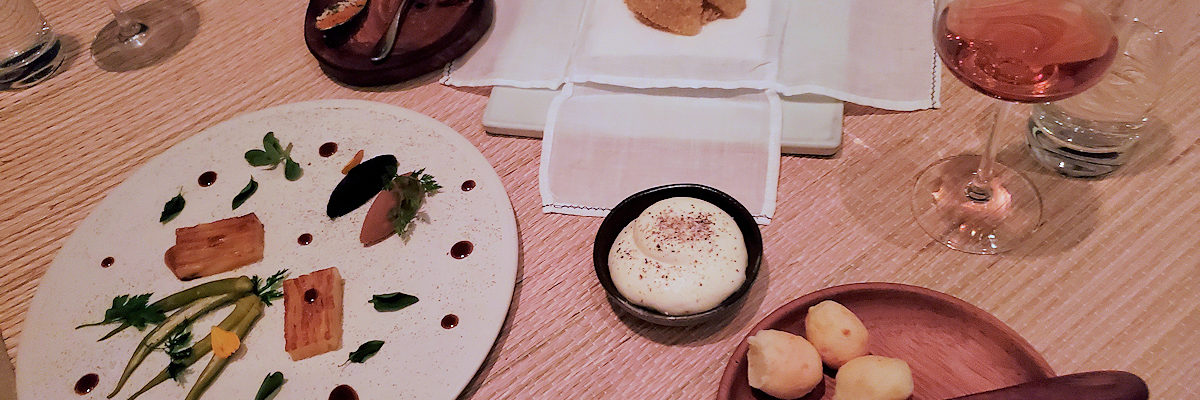
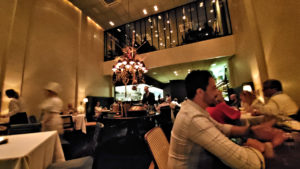
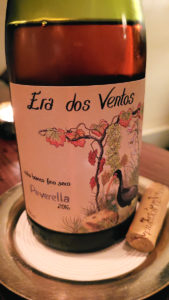
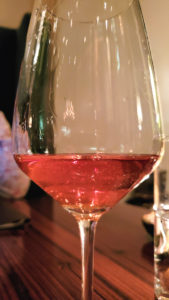
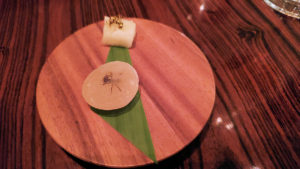
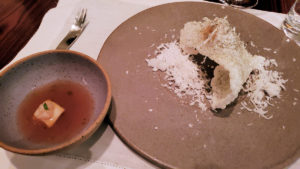
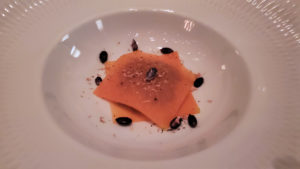
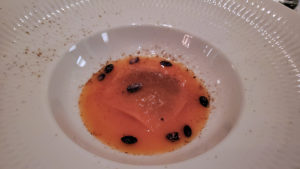
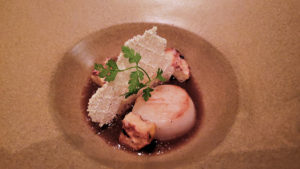
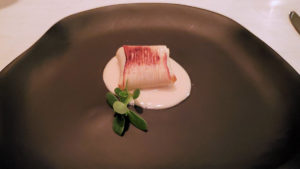
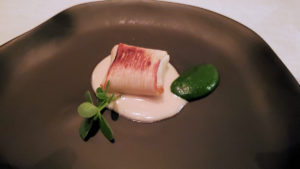
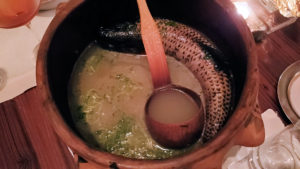
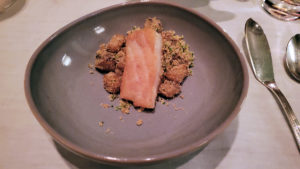
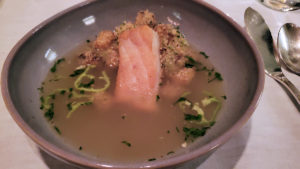
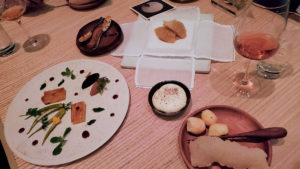
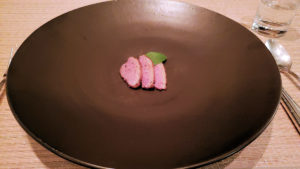
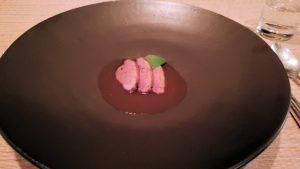
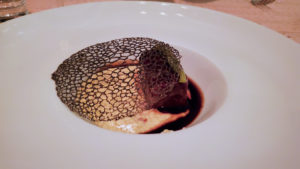
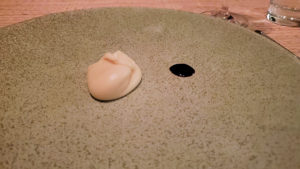
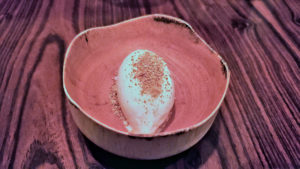
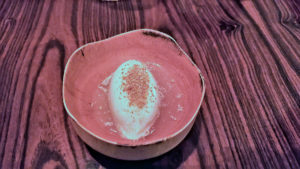
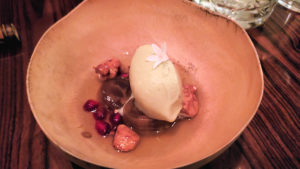
Anything at a resto that is intellectually stimulating but boring is, like, why? Still, quite photogenic!
Yeah, kind of my feelings – it was just an exercise in exploration, but not a particularly enjoyable dining experience.
[…] though we had a fascinating experience at the famed D.O.M., it just wasn’t as tasty as either of us would have liked – yet another of those high […]